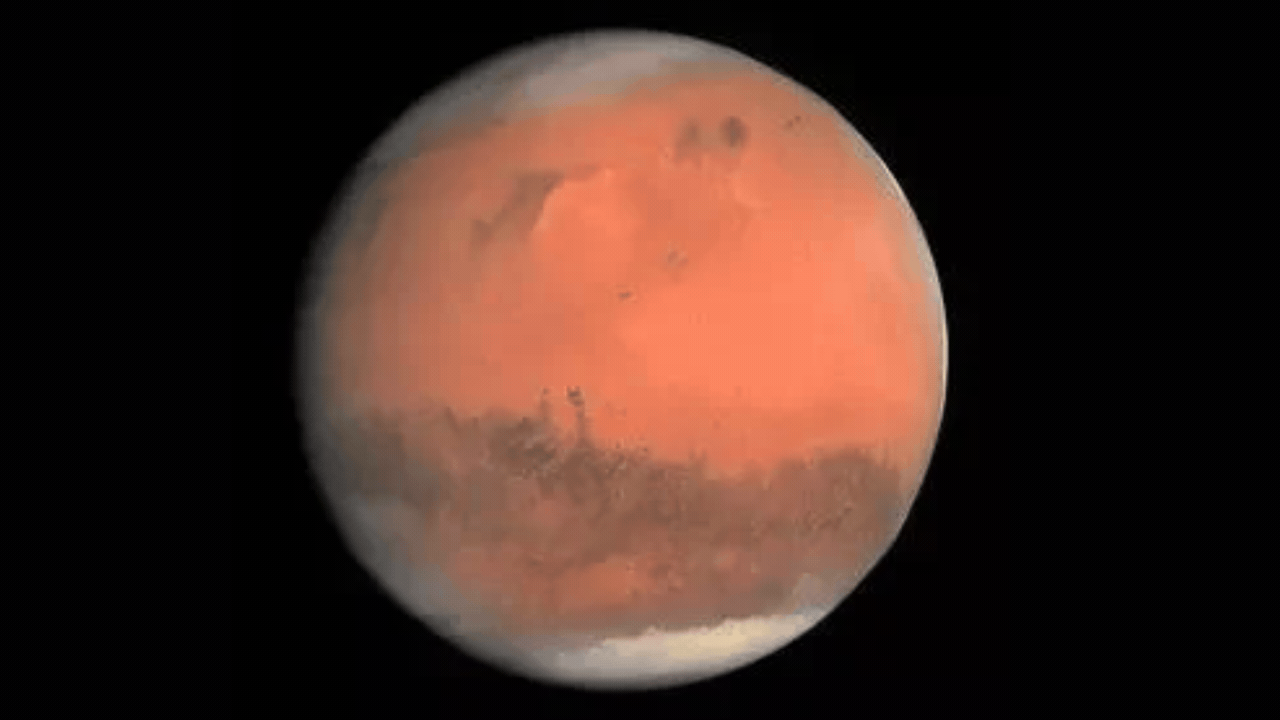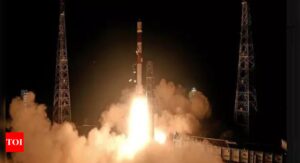

China has accelerated its Tianwen-3 mission to Mars, now aiming for a 2028 launch, two years ahead of the original plan.
This development comes as the US’ sample mission to the planet faces significant delays and increasing costs. Liu Jizhong, chief designer of China’s Mars mission, announced at the Second International Conference on Deep Space Exploration that the team intends to retrieve approximately 600 grams of Martian soil, according to the South China Morning Post.
If successful, the soil samples could be returned to Earth by July 2031. Namrata Goswami, a space policy researcher, believes that the country that first completes a successful Mars mission will become the global leader in space exploration, as it would demonstrate the ability to “safely land, collect samples, launch a rocket from Mars and transport the samples 33 million miles [53 million km] back to Earth.”
China is also offering 25kg of space for international payloads on the Tianwen-3 orbiter, showcasing its willingness to collaborate with other countries in exploring the moon and Mars. The mission will utilize three methods to collect soil from the Martian surface: multi-point surface scooping, fixed-point deep drilling, and rover-based sampling. This approach differs from Nasa’s Perseverance rover, which has been collecting samples in Mars’ Jezero crater since 2021.
Nasa’s Mars Sample Return (MSR) mission has faced uncertainty due to high costs and potential delays until 2040. The agency has asked aerospace companies to propose innovative concepts to expedite the process and reduce costs, aiming to return the samples to Earth in the 2030s. However, the optimal launch window for Mars only occurs every 26 months, casting doubt on the achievability of this timeline.
Analyzing samples from Mars is considered the next logical step in expanding our understanding of the planet and the solar system. While it may not be helpful to view it as a race, both China and the US are striving to be the first to retrieve rocks from the planet. China has stated that the search for signs of life will be Tianwen-3’s primary scientific goal and has pledged to adhere to international agreements on planetary protection to prevent contamination and preserve sample integrity.
As China identifies potential landing sites for Tianwen-3 and plans to build the world’s first Mars sample laboratory, the success of this mission could accelerate the country’s plans for a human Mars program, including establishing a research base on the planet by 2045. Other countries, such as India and the European Space Agency, have also announced their own missions to land on Mars in the coming years.
This development comes as the US’ sample mission to the planet faces significant delays and increasing costs. Liu Jizhong, chief designer of China’s Mars mission, announced at the Second International Conference on Deep Space Exploration that the team intends to retrieve approximately 600 grams of Martian soil, according to the South China Morning Post.
If successful, the soil samples could be returned to Earth by July 2031. Namrata Goswami, a space policy researcher, believes that the country that first completes a successful Mars mission will become the global leader in space exploration, as it would demonstrate the ability to “safely land, collect samples, launch a rocket from Mars and transport the samples 33 million miles [53 million km] back to Earth.”
China is also offering 25kg of space for international payloads on the Tianwen-3 orbiter, showcasing its willingness to collaborate with other countries in exploring the moon and Mars. The mission will utilize three methods to collect soil from the Martian surface: multi-point surface scooping, fixed-point deep drilling, and rover-based sampling. This approach differs from Nasa’s Perseverance rover, which has been collecting samples in Mars’ Jezero crater since 2021.
Nasa’s Mars Sample Return (MSR) mission has faced uncertainty due to high costs and potential delays until 2040. The agency has asked aerospace companies to propose innovative concepts to expedite the process and reduce costs, aiming to return the samples to Earth in the 2030s. However, the optimal launch window for Mars only occurs every 26 months, casting doubt on the achievability of this timeline.
Analyzing samples from Mars is considered the next logical step in expanding our understanding of the planet and the solar system. While it may not be helpful to view it as a race, both China and the US are striving to be the first to retrieve rocks from the planet. China has stated that the search for signs of life will be Tianwen-3’s primary scientific goal and has pledged to adhere to international agreements on planetary protection to prevent contamination and preserve sample integrity.
As China identifies potential landing sites for Tianwen-3 and plans to build the world’s first Mars sample laboratory, the success of this mission could accelerate the country’s plans for a human Mars program, including establishing a research base on the planet by 2045. Other countries, such as India and the European Space Agency, have also announced their own missions to land on Mars in the coming years.



